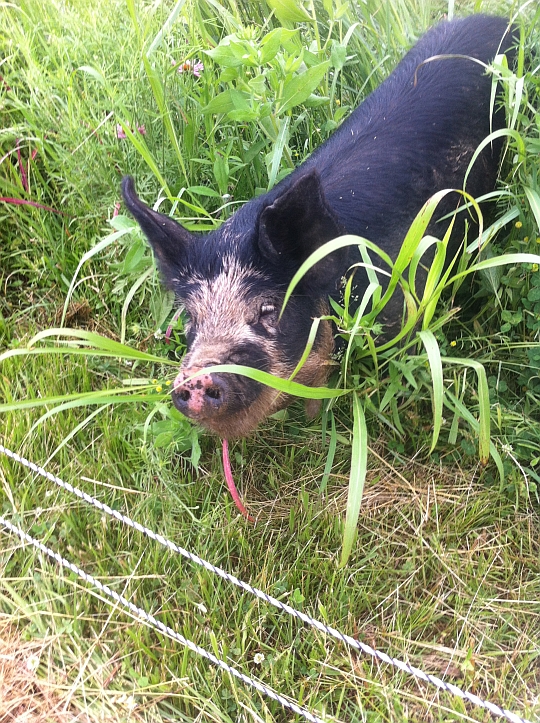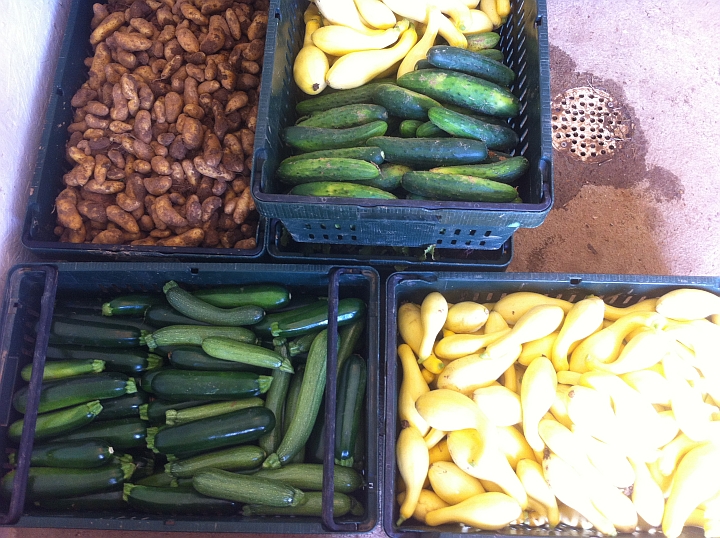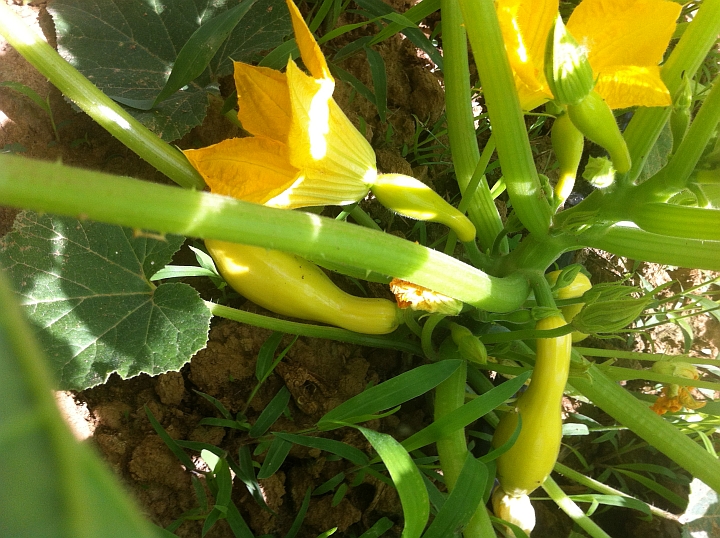Last week I noticed the squash plants starting to bloom. Hooray, yellow squash and zucchini are on the way! Then I looked closer. The plants were covered in female flowers, not a male flower in sight. Yup, squash and their cucurbit cousins like cucumbers and melons have separate male and female flowers. Male flowers are borne on stalks while female blooms are found at the end of a miniature fruit. The male flowers start blooming a week or two ahead of the female flowers to attract pollinators. Unlike tomatoes and corn, which are pollinated by the wind, squash require a go-between. Fruit that goes unpollinated will start to shrivel at the blossom end before it develops.
Last year we had another pollination problem. There were no bees. After an unusually cold winter, the native bees were conspicuously absent when the squash started blooming, leading to a lackluster crop. Not this year! There are now seven hives of honey bees on the farm. “There,” we thought, “squash problem solved!”
Now we have a new problem, and much weirder. The internet has nothing to say about it. All the publications I can find assure me that the male flowers bloom first. So we solve one problem only to have it replaced with a tougher one. What gives, Universe? At this point, the “why?” is irrelevant. Even if we knew why the squash were misbehaving (or NOT misbehaving as the case may be) there would be nothing we could do about it now. Except of course what we are doing, which is waiting and hoping the male flowers catch up. The plants are big and healthy, mildew free and I haven’t spotted any squash bugs yet (knock on wood), so we’ve still got a little time to get pollination going on.
Meet Tacitus
Last week Randy drove to Alabama to pick up our new boar hog. He is an Idaho Pastured Pig, a new breed developed by crossing the Berkshire, Kune Kune, and Duroc breeds. His first day on the farm, he didn’t make a peep. All our other pigs are noisy. They grunt while they root. They talk to one another. They scream and squeal when they see us coming. So we named him Tacitus. Now that he has settled in, he grunts softly at us but he is still the quietest pig I have ever met.
We just got our first Guinea Hog pork back from the processor, and it looks fabulous. But the bottom line is that our Guinea Hogs only got to about 125 pounds at nearly 2 years old. It isn’t really economical to process such a small pig. We plan to cross the IPP with our AGH to produce a small pig that grows a little faster and gets a little bigger, say 200 pounds in 15 months. Hopefully Tacitus will fit the bill.





